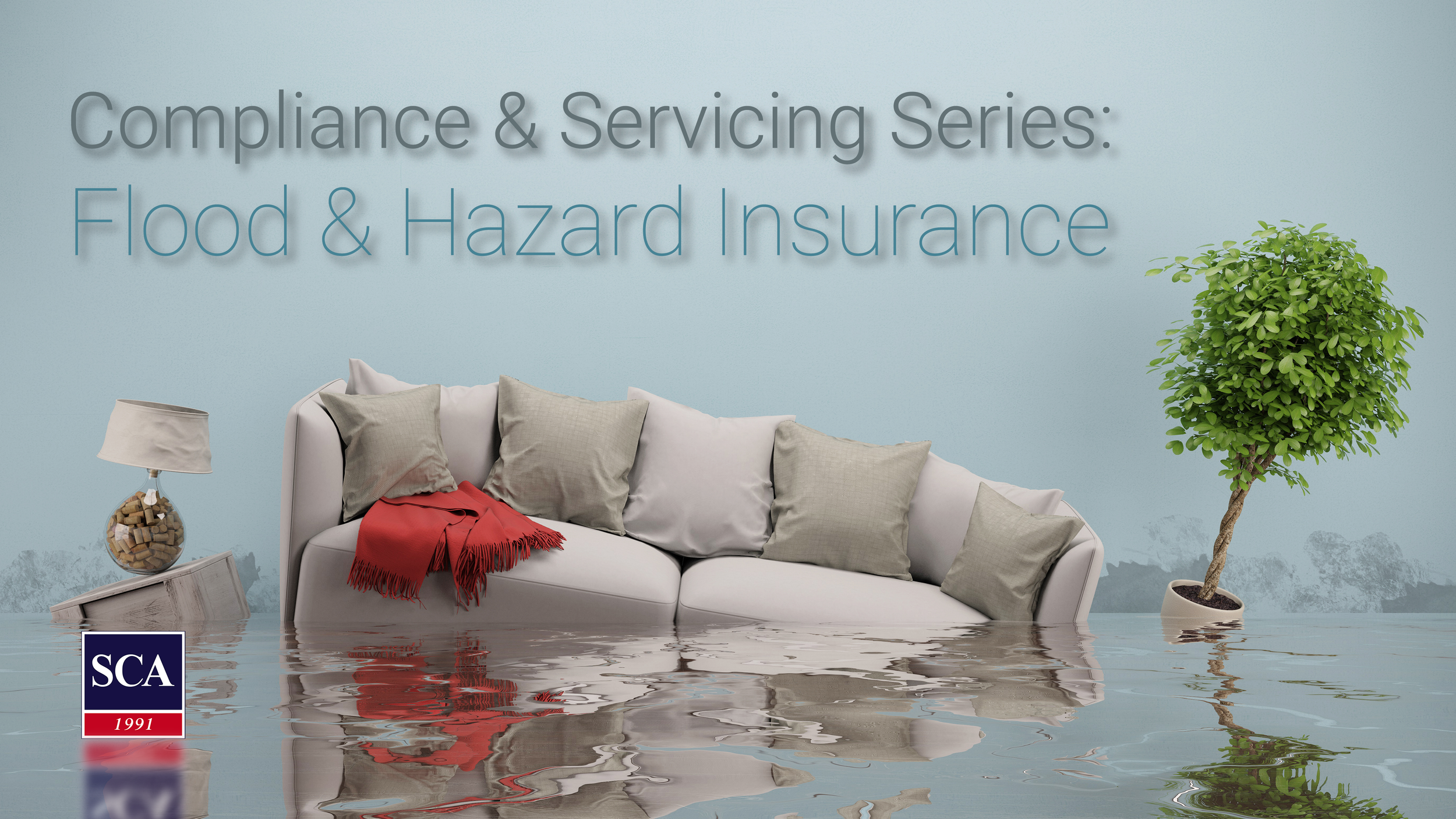Compliance & Servicing Series: Flood & Hazard Insurance
The season for severe weather is upon us, and no matter where your portfolio is concentrated, you need to be concerned with ensuring proper coverage is in place for your collateralized property. Weather-related natural disasters are here to stay: fires, floods, hurricanes, and tornados, to name a few. Don’t get caught in a mess when it comes to managing those insurance policies.
We see many financial institutions relying heavily on their external insurance tracking vendors to ensure proper hazard and flood insurance coverage is in place at all times. They also typically rely on them for adhering to the notification requirements around the letter cycle for renewals, cancellations, improper coverage amounts, etc. Although these vendors provide a valuable service, beneficial in keeping the day-to-day tasks on track, it is still the responsibility of the FI to ultimately oversee the vendors actions, manage the portfolio, and internally track, validate, and audit the compliance of the entire insurance servicing operation to ensure it adheres to all regulatory requirements.
Utilizing and maintaining coverage analysis worksheets is a common resource for determining if a policy meets the minimum requirements; and often these forms don’t flow as well as they should, or cover all scenarios, making it important to look at periodically. Additional variables such as validating the acceptance of private flood insurance carriers, reviewing for additional liens, assessing contents coverage, determining covered and uncovered structures, or calculating coverage amounts on policies purchased by a master association can all throw a wrench in the process. Your procedure document- which dictates how you maintain flood and hazard tracking, the ways in which you train your staff, and how you monitor its effectiveness, is equally important to keep current. Occasionally you’ll encounter a customer requesting information on filing a request for a LOMA/LOMR; are your staff skilled to handle these types of inquiries and do you have a process in place to manage and track these?
It is just as important to manage your flood certificate vendor as well- ensuring all certs include life of loan coverage, making sure you are updating or requesting new a cert with a MIRE triggering event, updating the loan servicing number on the cert, tracking for zone changes, and cancelling certs at payoff. If your serviced-loan portfolio contains loans from multiple vendors due to a change in service providers or a merger/acquisition, you’ll also need to think about if all vendors are up to date and in sync with your core, and that the notification channels are properly set, so you receive all notices of zone changes.
SCA’s Compliance and Servicing experts can work with you to close out the year with confidence in your insurance servicing portfolio - from flood and hazard loan scrubs, to procedural review, or analysis of services completed by your third-party vendors. Contact Bill Dolan, Director, at WDolan@scapartnering.com or by phone at (617) 694-2617 for more information on ways we can assist.


